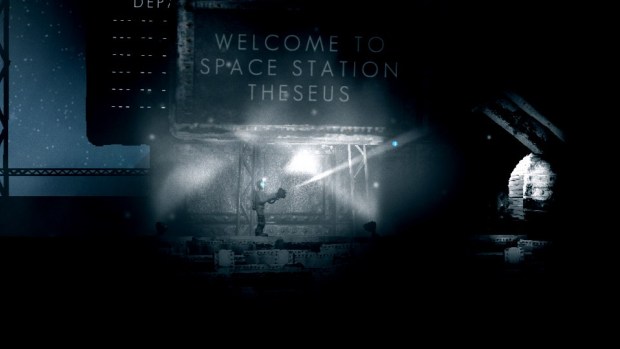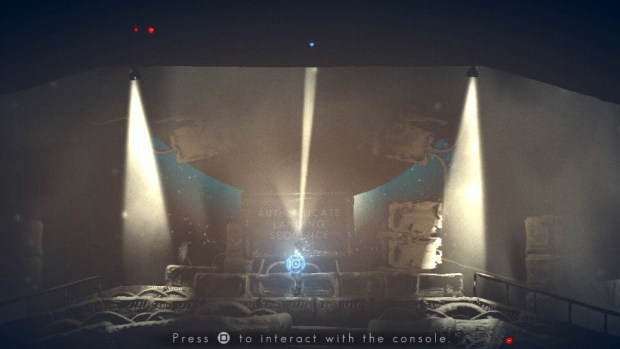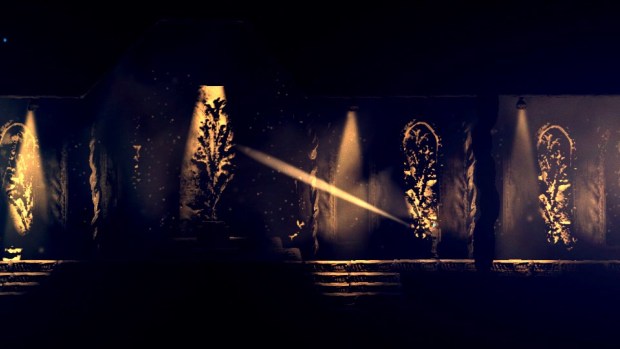The Swapper Review
The PlayStation Vita is a really interesting device. It’s almost like an anti-backlog console. My Steam backlog is shamefully large at this point. The Swapper by Facepalm Games has been on my to play list for a long time and I’ve been told things like “I can’t believe you haven’t played this yet” and “why wasn’t this on your GOTY list last year?” Despite owning The Swapper for months on Steam, I never played it barring my usual 30 minute stint after installing it. I got really excited once it was announced for PSN, and I’m pretty blown away after completing it on Vita.
The Swapper is a puzzle platformer, and a very dark and moody one at that. It has phenomenal art and music. The visuals are unlike any other game, with actual clay models used throughout; subtle piano pieces played as you progress the story combine with dark synth patches to set the tone for the game. Unlike Fez, The Swapper doesn’t have any puzzles that require too much time to solve (remember that clocktower puzzle that required you to wait for a few days in real time?). It has puzzles ranging from easy in the tutorial to really hard towards the end of the game as new mechanics are introduced. Every puzzle feels solvable, and I never felt helpless.

You play as someone stranded on the damaged space station Theseus, looking for a way out. Some areas are behind locked doors that require encryption orb, which are the aim for almost every puzzle in the game. The Swapper makes you start contemplating decisions very soon with its mechanics. The first tutorial area takes you around a few rooms and finally gives you the titular gun. Creating clones of yourself, destroying said clones for your benefit, and using clones to get further ahead are things you need to get used to, and there are memory terminals scattered across areas that give you some backstory.
The game begins with a cutscene explaining very little of the story. Even towards the end of the game, your understanding of the narrative will depend on how much you have explored areas. The basic game mechanics involve creating a clone by pressing L and swapping to it by pressing R while targetting it. There are different light sections that make your life difficult. You can’t create clones in blue light, red light cuts off your swapper rays and purple light limits both. Puzzles involve using floor buttons and blocks to control the lighting so you can switch to a clone and collect the encryption orbs.

The game has very little dialogue and voice acting. Certain puzzle sections trigger voice over events and as you pass giant rocks in the background, messages are displayed on the screen while slowing down your movement. The story is very cryptic in nature and there are loads of discussion threads online for individual perceptions of The Swapper – at times, it’s perhaps a little too cryptic.
Thankfully, it’s a visually incredible game. The dark atmosphere and amazing lighting coupled with the PlayStation Vita screen make for a euphoric experience for your senses. Text scales well on the small screen as well. The audio design and overall music in the game are haunting. In Gone Home, the sound effects always created the sense of someone else being there with you, but in The Swapper, you see others in the space station but feel alone throughout thanks to the stirring piano playing in the background.

Having played The Swapper on PC, I was curious to see how the controls translated to Vita and PS3 with a controller. The use of the mouse is really important in the game since the curser is basically your target for the Swapper device, which you control with the right analogue stick – the Vita also has the advantage of a touchscreen, which really helped. Swiping along the touchscreen to move the cursor is really great, but I would have preferred a touch-to-target system more. There is a slight slowdown issue in some areas on the Vita but it isn’t particularly annoying.
The PSN version supports trophies and if you’re a trophy hunter, you’re in for a world of disappointment. The trophies are the same as the Steam achievements and all 10 are unlocked by discovering hidden terminals. The game supports cross play, save, and buy, and syncing your saves across PS3 and Vita is painless. The crashes I experienced 3 times in my complete playthrough were a bit disappointing, but hopefully these will be fixed in a patch.

VERDICT: I haven’t been able to stop thinking about the puzzles and story since I completed The Swapper. For a game so cryptic, I’m surprised at how much it impacted me. The ending in particular will stay with you for a long time. The Vita’s small screen did wonders for the immersion, despite the beauty of The Swapper’s unique art style. My advice is turning the lights off, grabbing a good pair of noise-removing headphones, and getting completely and utterly enveloped in The Swapper. It is the triumvirate of visual, aural, and mental bliss.

SUPERB. This is the mark of greatness, only awarded to games that engage us from start to finish. Titles that score 9/10 will have very few problems or negative issues, and will deliver high quality and value for money across all aspects of their design.
Review code provided by publisher.




